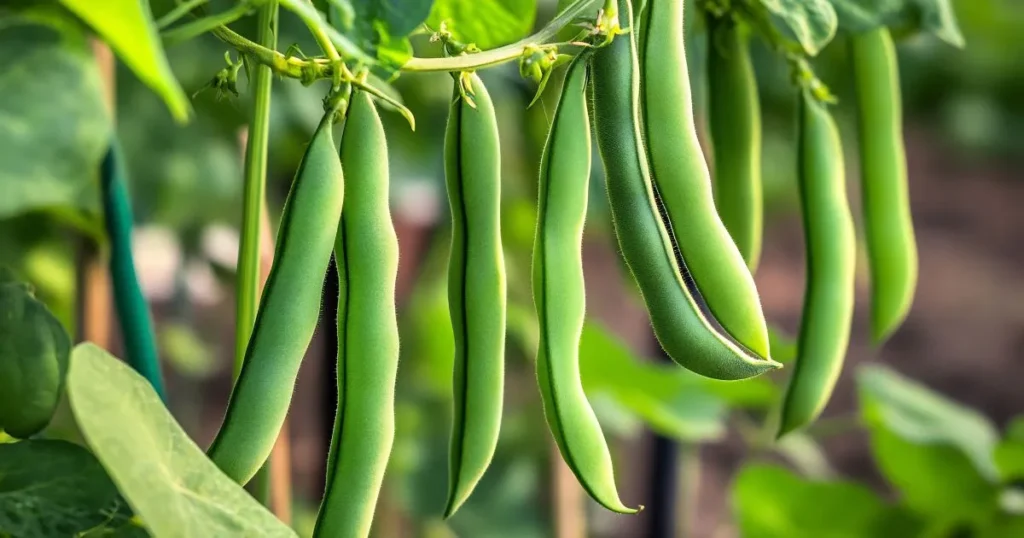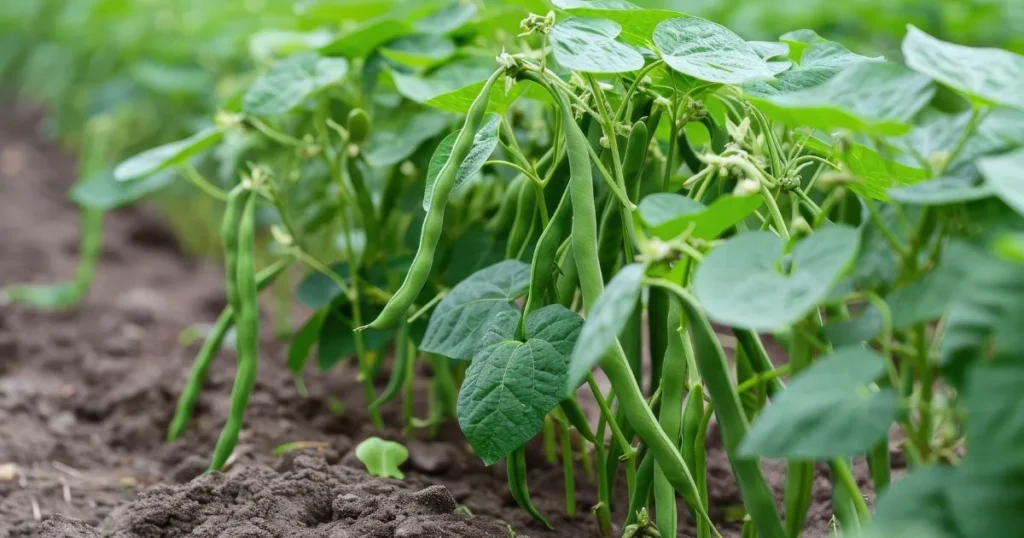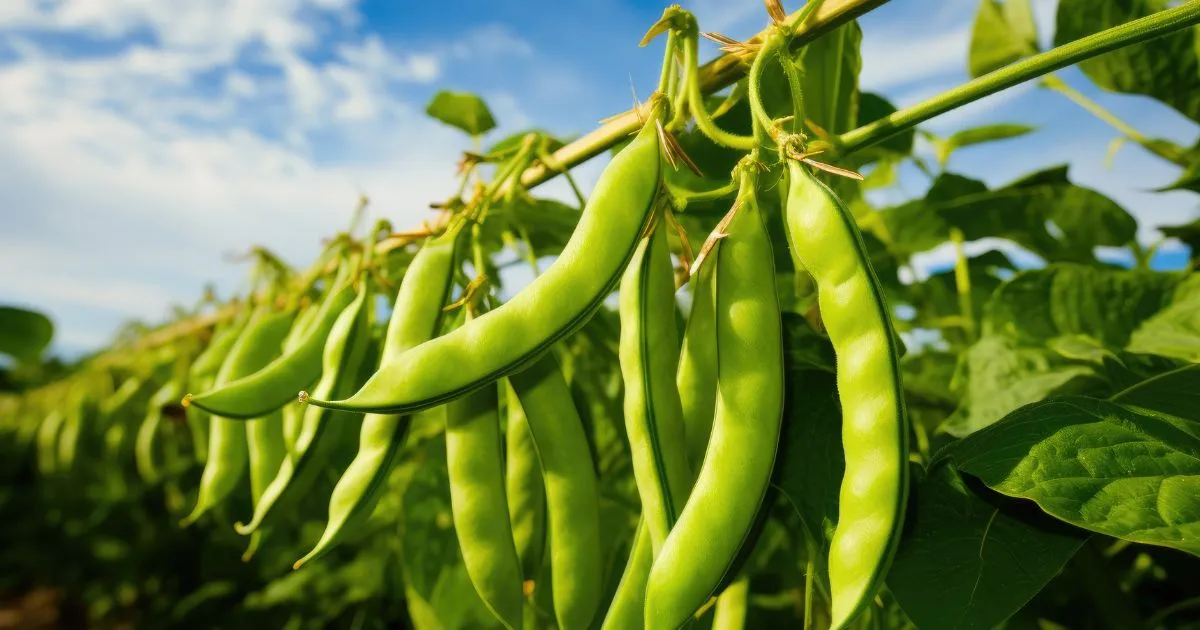Table of Contents
Green beans are a popular and nutritious vegetable that can be easily cultivated in home gardens or on a larger scale for commercial production. Whether you’re a novice gardener or an experienced farmer, green beans cultivation can be a rewarding endeavor, provided you understand the necessary steps for successful growth. In this detailed guide, we will explore every aspect of green beans cultivation, from selecting the right variety to harvesting and addressing common challenges.
Why Grow Green Beans?
Benefits of Green Beans Cultivation
- Nutritional Value: Green beans are rich in fiber, vitamins A, C, and K, and essential minerals like iron and calcium.
- Easy to Grow: Green beans are low-maintenance and grow quickly.
- High Yield: With proper care, green beans can provide a continuous harvest.
- Versatility: Can be grown in gardens, raised beds, and even containers.
- Soil Enrichment: As legumes, green beans improve soil quality by fixing nitrogen.
- Cost-Effective: Homegrown green beans are cheaper and fresher compared to store-bought alternatives.
- Sustainable Gardening: Growing your own green beans reduces the carbon footprint associated with transportation and packaging.
Choosing the Right Variety of Green Beans
Bush Beans vs. Pole Beans
Bush Beans
- Compact plants that do not require support.
- Faster growth cycle (50-60 days to harvest).
- Ideal for small spaces and container gardening.
- Easier to manage compared to pole beans.
- Suitable for succession planting for multiple harvests throughout the season.
Pole Beans
- Require a trellis or support to grow vertically.
- Longer growth cycle (60-75 days to harvest).
- Higher yields due to vertical growth.
- Produce beans for a more extended period compared to bush beans.
- Help maximize garden space by growing upwards.
Popular Green Bean Varieties
- Blue Lake (bush & pole): High yield and excellent flavor.
- Kentucky Wonder (pole): Disease-resistant and productive.
- Contender (bush): Fast-growing and tolerant to temperature variations.
- Provider (bush): Early maturing and disease-resistant.
- Romano (pole): Large, flat pods with excellent taste.
- Dragon’s Tongue (bush): Unique appearance with yellow and purple streaks.
- French Filet Beans (bush & pole): Thin, tender pods with gourmet quality.

Ideal Growing Conditions for Green Beans Cultivation
Climate Requirements
Green beans thrive in warm climates with temperatures ranging from 65°F to 85°F (18°C to 29°C). They are sensitive to frost and should be planted after the last frost date. In colder climates, using row covers or raised beds can help extend the growing season.
Soil Preparation
- pH Level: Optimal soil pH is between 6.0 and 6.8.
- Soil Type: Well-draining, loamy soil enriched with organic matter.
- Soil Fertility: Add compost or well-rotted manure before planting.
- Drainage: Avoid waterlogged soil to prevent root rot.
- Crop Rotation: Avoid planting beans in the same spot year after year to prevent disease build-up.
- Soil Aeration: Loosen soil before planting to promote root development.
Planting Green Beans
Seed Sowing
- Timing: Sow seeds after the last frost when soil temperature is at least 50°F (10°C).
- Spacing:
- Bush Beans: Space seeds 2-4 inches apart in rows 18-24 inches apart.
- Pole Beans: Plant seeds 6 inches apart along a trellis.
- Depth: Sow seeds 1 inch deep.
- Watering: Keep the soil consistently moist but not waterlogged.
- Companion Planting: Grow green beans with carrots, cucumbers, and lettuce for mutual benefits.
- Succession Planting: Plant new seeds every two weeks for a continuous harvest.
Caring for Green Beans
Watering
- Green beans need 1 inch of water per week.
- Water at the base of the plant to prevent fungal diseases.
- Avoid overhead watering to reduce the risk of powdery mildew.
- Mulching helps retain moisture and reduces the need for frequent watering.
Mulching
- Apply organic mulch to retain moisture and suppress weeds.
- Use straw, grass clippings, or wood chips.
Fertilization
- Avoid nitrogen-heavy fertilizers, as excessive nitrogen leads to more foliage than beans.
- Use a balanced fertilizer (5-10-10) or compost tea.
- Side-dress with organic compost when plants start flowering.
Staking and Support (for Pole Beans)
- Install trellises, stakes, or bean poles at least 6-8 feet tall.
- Ensure proper spacing to allow air circulation.
- Regularly tie vines to the support for better growth.
Common Pests and Diseases in Green Beans Cultivation
Pests
Aphids
- Suck plant sap, leading to stunted growth.
- Control with neem oil or insecticidal soap.
Bean Beetles
- Larvae feed on leaves, causing defoliation.
- Handpick beetles and use floating row covers.
Spider Mites
- Tiny pests that cause leaf discoloration.
- Spray plants with water and apply insecticidal soap.
Diseases
Powdery Mildew
- White powdery spots on leaves.
- Prevent with proper spacing and air circulation.
Rust
- Orange-brown spots on leaves.
- Use disease-resistant varieties and avoid overhead watering.
Root Rot
- Caused by overwatering and poor drainage.
- Improve soil drainage and practice crop rotation.

Conclusion
Green beans cultivation is a rewarding gardening activity that provides fresh, nutritious produce with minimal effort. By selecting the right variety, ensuring proper soil conditions, and following good agricultural practices, you can enjoy a bountiful harvest. With pest management, timely watering, and regular harvesting, your green beans cultivation efforts will yield high-quality beans for your meals.
Frequently Asked Questions (FAQ)
1. Can green beans be grown in containers?
Yes, bush beans are well-suited for containers. Use a 10-12 inch deep pot and provide adequate drainage.
2. Do green beans need full sun?
Yes, green beans require at least 6-8 hours of direct sunlight per day.
3. How often should I fertilize green beans?
Apply a balanced fertilizer once at planting and again when flowers appear.
4. What is the best way to prevent pests in green beans cultivation?
Use companion planting (e.g., marigolds, basil), row covers, and organic insecticides.
5. Why are my green beans not producing?
Possible reasons include excessive nitrogen, poor pollination, or lack of sunlight. Adjust fertilization and ensure proper growing conditions.
By following these guidelines, your green beans cultivation journey will be successful, leading to a plentiful and healthy harvest.

